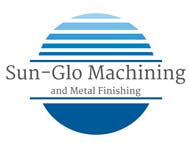Stainless steel is often hailed as one of the most useful and corrosion-resistant metals on the planet. But did you know that stainless steel can, in fact, become stained with corrosion? This happens for a number of reasons but there is actually a process that can increase the corrosion resistance of stainless steel. That process is called citric acid passivation and it’s a simple procedure that can ensure that your stainless steel products last longer.
While stainless steel has its major advantage built right into its name, mostly that it is very resistant to corrosion, this effect can actually be improved through a simple process called passivation. This process involves bathing stainless steel parts in a specialized citric acid mixture. This mixture strips the stainless steel of any free iron on the outside of the metal. Since stainless steel is usually composed of multiple metals, some of these metals can actually lead to corrosion. Citric acid passivation removes layers of corrosive free iron and ensures that the metal can remain its namesake.
In the past, nitric acid passivation was a more popular means of increasing the corrosion resistance of stainless steel products. This process, however, is much more dangerous and not environmentally friendly. As such, it has largely been replaced with citric acid passivation, which offers a number of advantages besides increased corrosion resistance. Here are just a few.
1. Affordability
Citric acid passivation improves the corrosion resistance of your stainless steel products, and that has a number of indirect advantages. These can include anything from longevity to the product, to improved looks—all of which are important for any final product.
2. Improved Sterilization
Citric acid is a powerful acid mixture that can not only strip away free iron but can also increase the sterilization of your stainless steel; any dirt, debris or stray materials that may be caught in your products will be dissolved in the citric acid passivation process, leaving your products cleaner and more sterilized.
3. An Increase in Chemical Protection
While corrosion protection is the primary benefit associated with citric acid passivation, it also improves chemical protection as well by a small amount. This can help protect your final products from any chemical damage they may experience in the future, and it can ensure that they look great for much longer, especially in environments where chemicals may come in contact with them.
4. Safety
Probably the most important improvement that citric acid passivation has over traditional passivation with nitric acid comes down to basic safety. Nitric acid passivation can lead to serious problems, especially when employed incorrectly, including the release of dangerous nitric gas into a facility. In these instances, people must be evacuated from buildings. And while nitric acid passivation has its advantages, citric acid is a much friendlier alternative that poses fewer risks with similar results.
Citric acid passivation is one of the best methods because it not only increases the corrosion resistance of your stainless steel products, but it is also a simple and affordable alternative to traditional nitric acid passivation. It helps your stainless steel products, and the projects that they are used in, to be stronger and last longer.
Sun-Glo Machining and Metal Finishing
quotes@sun-glo.com
800-741-1456
